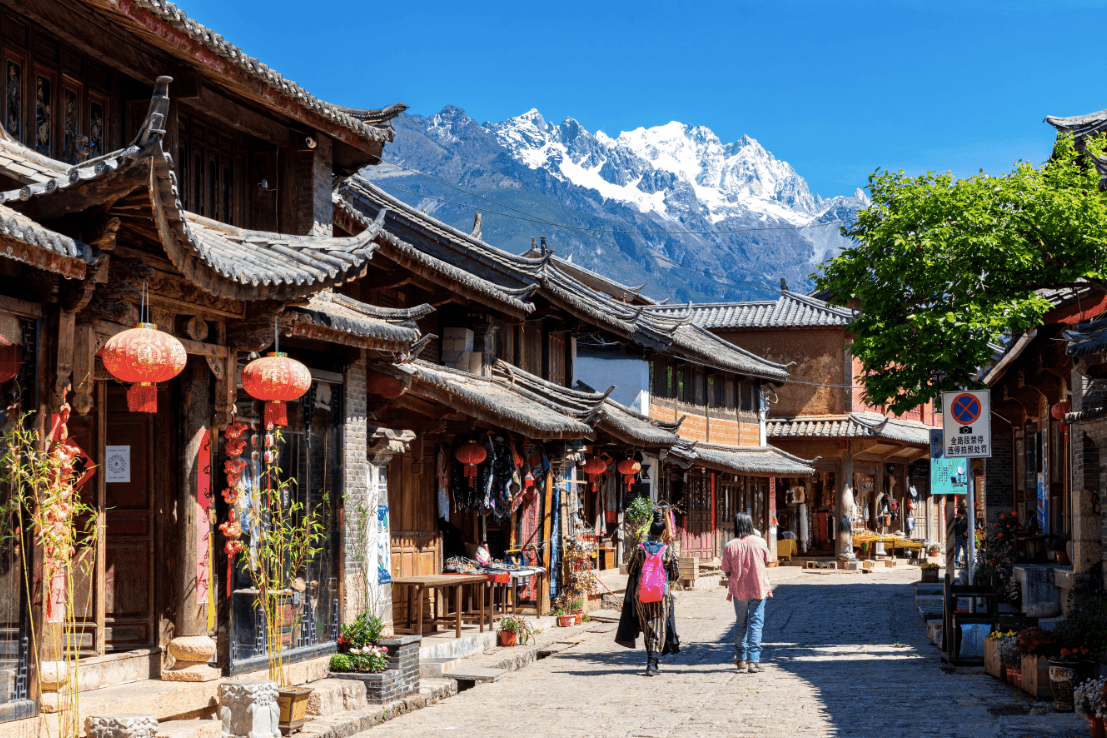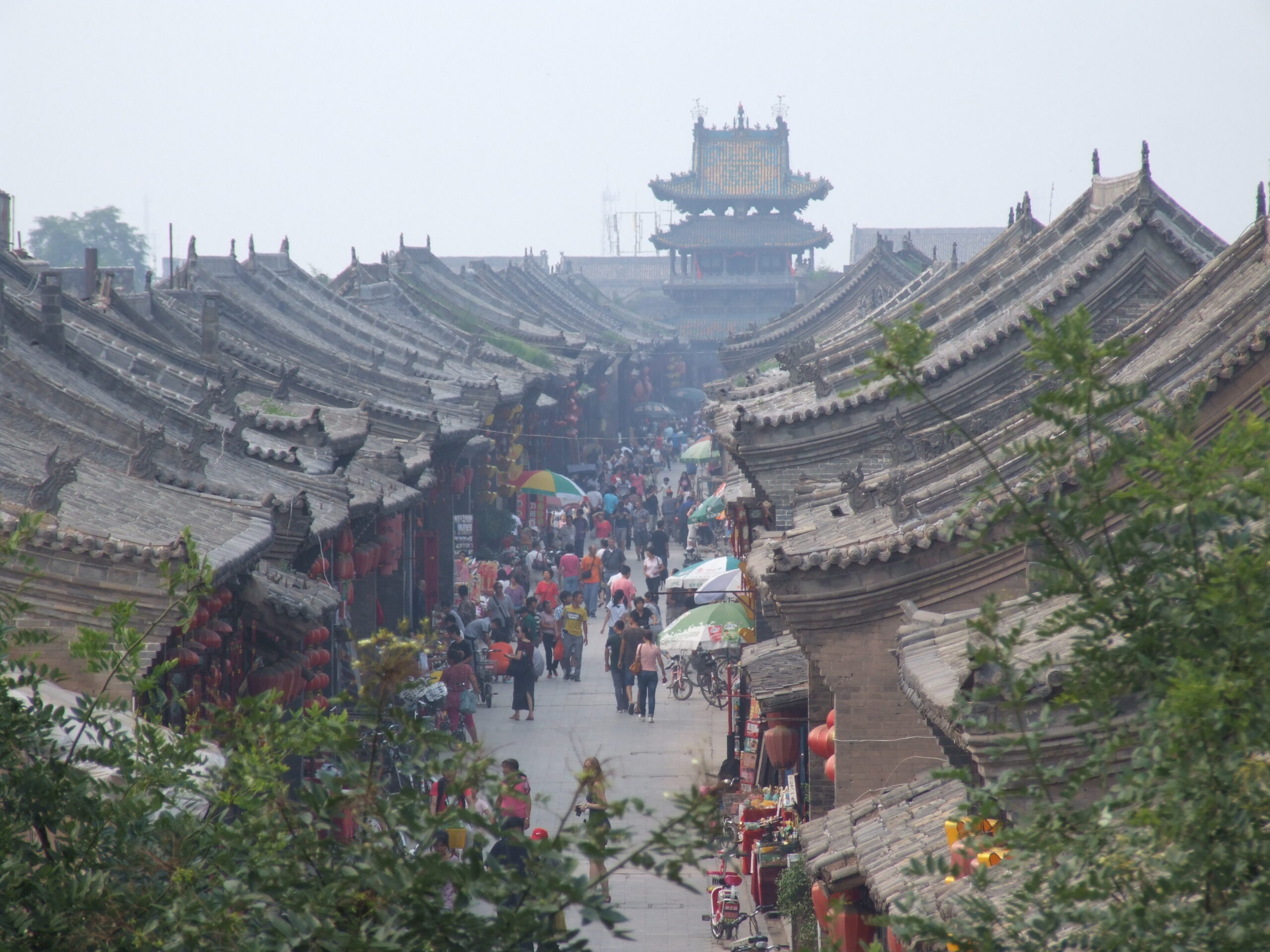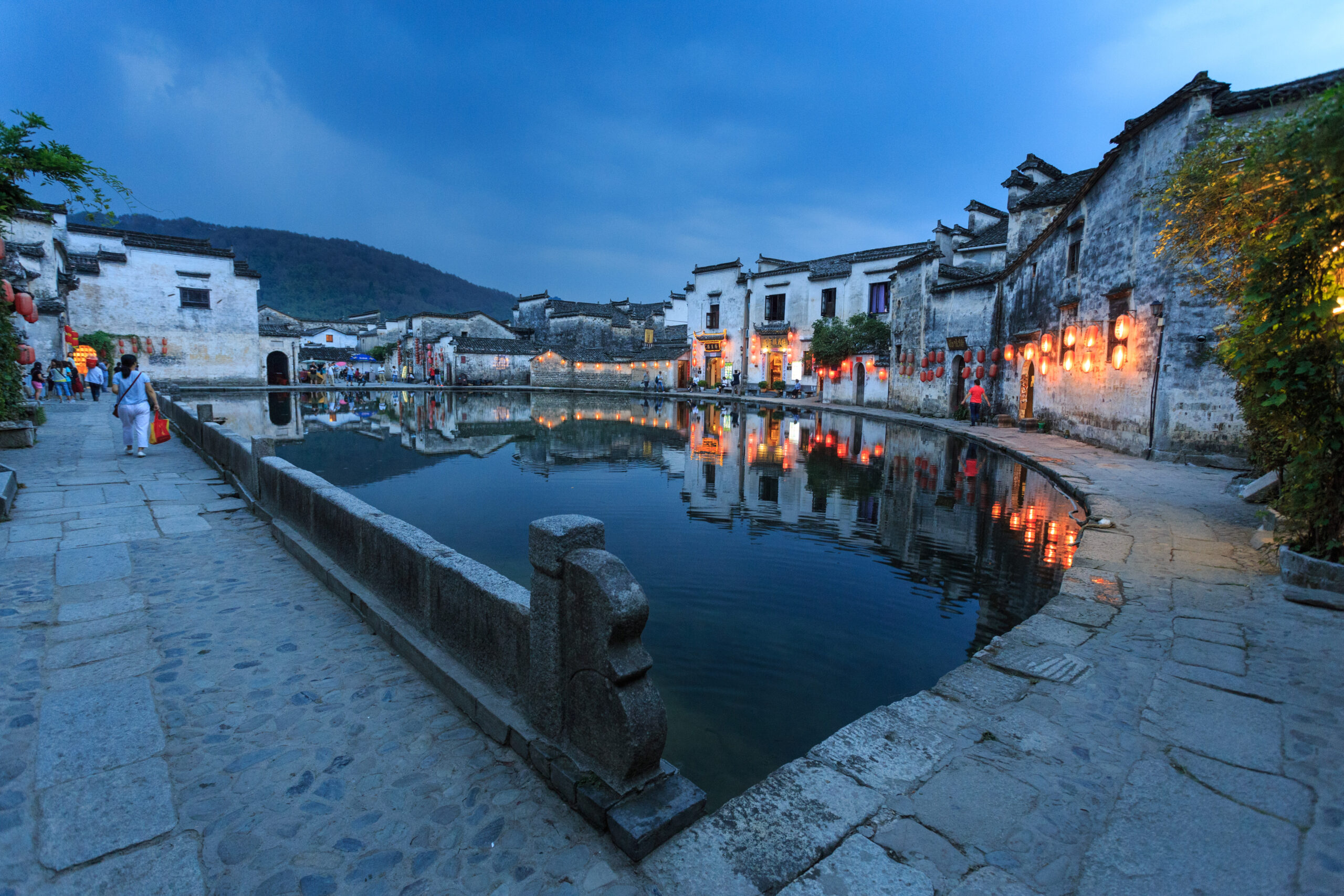Famous Old Towns in China: A Complete Travel Guide to Ancient Wonders
China’s ancient towns offer travelers an extraordinary journey through millennia of history. These preserved settlements showcase traditional architecture, cultural heritage, and timeless charm that modern cities cannot replicate. From the mystical Naxi culture of Lijiang to the waterway networks of Zhouzhuang, each destination tells a unique story of Chinese civilization.
After exploring dozens of these historic gems across multiple provinces, I’ve witnessed firsthand how these towns serve as living museums. They preserve not just buildings, but entire ways of life that have endured for centuries. The morning mist rising from ancient canals, the sound of traditional craftsmen at work, and the taste of recipes passed down through generations create experiences that photographs simply cannot capture.
Table of Contents
Why Famous Old Towns in China Matter for Modern Travelers
Ancient Chinese towns represent something increasingly rare in our fast-paced world. They offer authentic cultural immersion that five-star hotels and modern attractions cannot provide. These destinations allow travelers to step back in time and experience China’s rich heritage through all five senses.
The preservation of these towns has become more critical than ever. Many face challenges from over-tourism, modernization pressures, and climate change. Visiting them responsibly helps support local communities and conservation efforts while providing travelers with profound cultural experiences.
Top 10 Famous Old Towns in China Every Traveler Should Visit
Lijiang Old Town, Yunnan Province

Lijiang represents the pinnacle of ancient Chinese urban planning. This UNESCO World Heritage site showcases the remarkable Naxi culture through its cobblestone streets, traditional architecture, and vibrant community life. The Lijiang Old Town‘s elevation at 2,400 meters provides stunning mountain backdrops that enhance its mystical atmosphere.
The ancient water management system still functions today, with crystal-clear streams flowing through the town center. Local Naxi people continue traditional crafts like wood carving and textile weaving, creating an authentic cultural experience. The town’s unique dongba pictographic writing system represents one of the world’s last living hieroglyphic languages.
Best time to visit: March to May and September to November offer pleasant weather and fewer crowds.
Cultural significance: Home to the Naxi people, who have preserved their unique matriarchal society and shamanic traditions for over 1,000 years.
Fenghuang Ancient Town, Hunan Province

Fenghuang captures the essence of southwestern Chinese architecture with its distinctive wooden stilt houses built along the Tuojiang River. The town’s name means “Phoenix,” and its layout resembles a phoenix spreading its wings. This poetic symbolism reflects the Chinese approach to urban design that harmonizes with natural landscapes.
The town’s military history as a frontier outpost created unique architectural features. Ancient city walls, watchtowers, and defensive structures blend seamlessly with residential areas. The morning fog rolling over the river creates dreamlike scenes that have inspired countless poets and painters throughout Chinese history.
The local Miao and Tujia ethnic minorities maintain their cultural traditions through daily life. Traditional festivals, handicrafts, and culinary specialties offer visitors authentic cultural exchanges. The town’s compact size makes it perfect for leisurely exploration on foot.
Transportation: High-speed train to Jishou, then 45-minute bus ride to Fenghuang.
Accommodation tip: Stay in riverside guesthouses for the most authentic experience.
Wuzhen Water Town, Zhejiang Province

Wuzhen epitomizes the classic Jiangnan water town experience. Its extensive canal system, traditional architecture, and preserved cultural practices make it one of China’s most photographed destinations. The town’s dual nature – with ancient East District and revitalized West District – demonstrates different approaches to heritage preservation.
The town’s silk production heritage continues today, with traditional workshops demonstrating centuries-old techniques. Visitors can observe the entire process from silkworm cultivation to finished textile creation. The local blue-and-white printed fabric represents a unique regional art form that has influenced Chinese fashion for generations.
Wuzhen’s culinary traditions reflect its water town heritage. Fresh river fish, traditional rice wines, and unique preparation methods create flavors distinct from other Chinese regions. The town’s teahouses and restaurants occupy buildings that have served travelers for hundreds of years.
Photography tip: Golden hour shots from stone bridges create the most stunning water reflections.
Cultural experience: Attend traditional opera performances in historic theaters.
Zhouzhuang Water Town, Jiangsu Province

Zhouzhuang gained international fame through Chen Yifei’s painting “Memory of Hometown,” which depicted the town’s iconic twin bridges. This recognition brought global attention to Chinese water towns and helped establish cultural tourism in the region. The town’s 900-year history as a commercial center created architectural diversity that reflects changing prosperity levels.
The town’s layout follows feng shui principles, with water channels directing positive energy throughout the settlement. Traditional merchant houses showcase varying architectural styles from different dynasties. The preserved guild halls demonstrate the complex social structures that governed ancient Chinese commerce.
Local boat rides provide unique perspectives on the town’s architecture and daily life. Skilled boatmen navigate narrow canals while sharing stories about the town’s history and cultural significance. These waterway tours offer intimate glimpses into spaces that pedestrians cannot access.
Best experience: Early morning boat tours before crowds arrive.
Historical significance: Former residence of Ming Dynasty literati and successful merchants.
Pingyao Ancient City, Shanxi Province

Pingyao represents China’s best-preserved ancient city, with complete Ming Dynasty walls and urban planning intact. The city’s role as a financial center during the Qing Dynasty created unique architectural features that reflect its commercial importance. Modern China’s banking industry traces its origins to institutions that operated within these walls.
The city’s defensive walls stretch for six kilometers and include 72 watchtowers. Walking these ramparts provides panoramic views of traditional courtyard houses and modern life coexisting. The wall’s construction techniques demonstrate advanced engineering knowledge that protected the city for over 600 years.
Traditional courtyard houses showcase different social classes and architectural styles. The Qiao Family Compound and other merchant residences demonstrate the wealth and sophistication of Pingyao’s historical elite. These buildings now serve as museums that explain daily life during China’s imperial period.
UNESCO status: Inscribed in 1997 for exceptional preservation of urban planning and architecture.
Local specialty: Aged vinegar production continues using traditional methods.
Hongcun Village, Anhui Province

Hongcun demonstrates classical Chinese village planning principles through its ingenious water management system. The village’s layout resembles a water buffalo, with the nearby hill representing the head and village structures forming the body. This symbolic design reflects Chinese beliefs about harmony between human settlements and natural landscapes.
The village’s artificial lake system serves multiple purposes: fire prevention, fish farming, and aesthetic enhancement. Traditional Huizhou architecture surrounds the lake, creating perfect reflections that change with seasons and weather conditions. The integration of water, architecture, and landscape represents Chinese design philosophy at its finest.
Local craftsmen maintain traditional building techniques using materials like local stone, wood, and special mortar. The village’s preservation efforts balance tourist access with authentic community life. Residents continue traditional occupations while welcoming visitors to experience their cultural heritage.
Film location: Featured in “Crouching Tiger, Hidden Dragon” and numerous Chinese productions.
Architecture focus: Huizhou-style buildings with distinctive white walls and black tiles.
Xitang Ancient Town, Zhejiang Province

Xitang‘s covered corridors create unique architectural features that protect pedestrians from weather while maintaining open-air market traditions. These 1,300-meter-long corridors demonstrate practical urban design solutions that modern cities often overlook. The town’s layout maximizes limited space while preserving community gathering areas.
The town’s bar culture represents a successful blend of ancient architecture with contemporary social life. Traditional buildings house modern establishments that attract young travelers while maintaining historical character. This evolution demonstrates how heritage towns can adapt to changing tourism patterns without losing authenticity.
Local festivals celebrate traditional culture through dragon boat races, opera performances, and seasonal celebrations. The town’s compact size allows visitors to participate in community events alongside local residents. These experiences provide authentic cultural immersion that larger tourist destinations cannot offer.
Evening atmosphere: Lantern-lit corridors create magical nighttime ambiance.
Cultural blend: Traditional tea houses and modern cafes coexist harmoniously.
Dali Old Town, Yunnan Province

Dali’s location beneath Cangshan Mountain and beside Erhai Lake creates dramatic natural settings that enhance its cultural significance. The town served as the capital of the ancient Nanzhao Kingdom, giving it political and cultural importance that shaped its architectural development. The blend of Han Chinese and Bai minority influences creates unique cultural expressions.
The town‘s marble production heritage continues today, with traditional quarrying and carving techniques preserved through family workshops. Local artisans create everything from architectural elements to decorative objects using skills passed down through generations. The three pagodas nearby demonstrate the town’s Buddhist heritage and architectural sophistication.
Traditional markets showcase regional specialties including tea, herbs, and handicrafts. The town’s location on ancient trade routes created cultural diversity that continues today. Local festivals celebrate both Han Chinese traditions and Bai minority customs, providing visitors with rich cultural experiences.
Natural setting: Dramatic mountain and lake views from ancient city walls.
Cultural diversity: Bai minority traditions blend with Han Chinese customs.
Furong Ancient Town, Hunan Province

Furong‘s dramatic setting on a cliff beside a waterfall creates one of China’s most spectacular ancient town locations. The town’s name means “hibiscus flower,” reflecting its natural beauty and cultural significance. Traditional stilt houses built into the cliff face demonstrate remarkable engineering adaptation to challenging terrain.
The town’s preservation challenges have created innovative solutions for maintaining authentic character while ensuring visitor safety. Modern infrastructure integrates discretely with historical architecture, providing necessary services without compromising aesthetic integrity. This balance demonstrates best practices for heritage tourism development.
Local ethnic minority communities maintain traditional lifestyles within the town’s modern tourism framework. Visitors can observe traditional crafts, participate in cultural activities, and purchase authentic handmade products. These interactions support local economies while providing meaningful cultural exchanges.
Unique feature: Waterfall flows directly through the town center.
Photography opportunity: Dramatic cliff-side architecture creates stunning compositions.
Dig deeper: Fenghuang vs Furong Town: A Comprehensive Comparison
Zhenyuan Ancient Town, Guizhou Province

Zhenyuan’s location along the Wuyang River created strategic importance that shaped its development over 2,000 years. The town’s defensive position in a river valley required innovative architectural solutions that created its distinctive character. Traditional buildings climb hillsides while maintaining connection to river-level commercial areas.
The town’s ethnic diversity reflects its position on ancient trade routes connecting different regions. Miao, Dong, and Han cultures blend through architecture, cuisine, and cultural practices. Local festivals demonstrate this cultural fusion through music, dance, and ceremonial traditions that visitors can observe and participate in.
The town’s preservation efforts focus on maintaining authentic community life while developing sustainable tourism. Local residents continue traditional occupations while participating in tourism services. This approach creates authentic experiences while supporting local economic development.
River setting: Dramatic curves create natural barriers and scenic beauty.
Cultural fusion: Multiple ethnic groups create diverse cultural expressions.
Planning Your Ancient Town Journey
Best Time to Visit Famous Old Towns
Spring (March-May) offers the most comfortable weather for exploring ancient towns. Temperatures remain moderate, and spring flowers enhance the natural beauty of these historic settings. This season also coincides with many traditional festivals that provide authentic cultural experiences.
Autumn (September-November) provides excellent photography conditions with clear skies and comfortable temperatures. The changing leaves create stunning backdrops for ancient architecture, while harvest festivals offer unique cultural experiences. Tourist crowds decrease after summer, allowing for more intimate exploration.
Summer visits require careful planning due to heat and humidity, particularly in southern regions. Early morning and evening exploration times provide the best conditions for photography and cultural activities. Many towns offer extended evening hours during summer months, creating opportunities for nighttime photography and cultural events.
Transportation and Accessibility
Most famous old towns are accessible via high-speed rail networks that connect major cities. Planning connections through regional transportation hubs simplifies multi-town itineraries. Advanced booking becomes essential during peak seasons and national holidays.
Local transportation within towns typically involves walking, with some offering traditional boat rides or bicycle rentals. The compact nature of most ancient towns makes them highly walkable, though uneven stone surfaces require appropriate footwear. Luggage storage services help visitors explore comfortably.
Accommodation Strategies
Traditional guesthouses provide the most authentic experiences, often located in converted historic buildings. These accommodations offer unique architectural features and cultural immersion opportunities. Booking directly with local operators often provides better rates and personalized service.
Modern hotels in nearby areas offer contemporary amenities while maintaining easy access to historic districts. This option suits travelers who prefer modern comforts while exploring ancient settings. Many hotels provide shuttle services to historic areas during peak times.
Cultural Etiquette and Responsible Tourism
Respecting local customs enhances both visitor experiences and community relationships. Photography etiquette becomes particularly important in active communities where residents continue daily life alongside tourism activities. Asking permission before photographing people demonstrates cultural sensitivity.
Supporting local economies through authentic purchases helps preserve traditional crafts and cultural practices. Choosing handmade products over mass-produced souvenirs provides meaningful connections to local artisans. Many workshops offer demonstrations that enhance understanding of traditional techniques.
Environmental responsibility includes proper waste disposal and respecting natural areas surrounding ancient towns. Many locations implement visitor limits to protect fragile historic structures. Following designated paths and respecting barriers helps preserve these irreplaceable cultural resources.
Regional Specialties and Cultural Experiences

Culinary Traditions
Each ancient town offers unique culinary traditions that reflect local ingredients, ethnic influences, and historical developments. Traditional recipes often utilize ingredients and techniques that have remained unchanged for centuries. Local restaurants typically occupy historic buildings that enhance the dining experience.
Water towns specialize in fresh river fish prepared using traditional methods. The combination of fresh ingredients, traditional cooking techniques, and historic settings creates memorable dining experiences. Local wines and spirits often accompany meals, representing regional production traditions.
Mountain towns offer hearty dishes that reflect their challenging environments and ethnic diversity. Preserved foods, unique seasonings, and traditional cooking methods create flavors distinct from mainstream Chinese cuisine. Local markets provide opportunities to observe food preparation and purchase authentic ingredients.
Traditional Arts and Crafts
Ancient towns serve as living museums for traditional Chinese arts and crafts. Local artisans maintain skills that have been passed down through generations, creating authentic products that reflect regional traditions. Workshops and demonstrations provide insights into complex techniques and cultural significance.
Textile production remains active in many ancient towns, with traditional techniques producing distinctive fabrics and garments. Visitors can observe processes from raw material preparation to finished products. Many workshops offer hands-on experiences that provide deeper understanding of traditional crafts.
Architectural crafts including wood carving, stone masonry, and traditional painting continue through restoration projects and new construction. Skilled craftsmen demonstrate techniques that created these historic buildings while training new generations. These living traditions ensure the continuation of cultural knowledge.
Festival Celebrations
Traditional festivals provide the most authentic cultural experiences available in ancient towns. These celebrations often follow lunar calendar dates and include community participation that welcomes visitors. Local festivals demonstrate cultural continuity that connects past and present.
Religious festivals reflect the spiritual traditions that shaped these communities. Buddhist, Taoist, and folk religious practices create ceremonial events that provide insights into Chinese spiritual culture. Respectful participation in these events offers profound cultural understanding.
Seasonal festivals celebrate agricultural cycles, historical events, and cultural traditions. These celebrations often include traditional music, dance, and theatrical performances. Local participation creates authentic community experiences that commercial entertainment cannot replicate.

Frequently Asked Questions About Famous Old Towns in China
What are the most famous old towns in China?
The most renowned ancient towns include Lijiang in Yunnan, Fenghuang in Hunan, Wuzhen in Zhejiang, Zhouzhuang in Jiangsu, and Pingyao in Shanxi. These destinations offer the best preservation of traditional architecture, cultural heritage, and authentic experiences. Each town represents different regional styles and historical periods.
How many days should I spend visiting Chinese ancient towns?
Most individual towns require 1-2 days for thorough exploration. Larger destinations like Lijiang or Pingyao benefit from 2-3 days to fully appreciate their cultural depth. A comprehensive ancient towns tour typically spans 7-14 days, allowing time for travel between destinations and meaningful cultural experiences.
What’s the best time of year to visit famous old towns in China?
Spring (March-May) and autumn (September-November) offer optimal weather conditions for exploring ancient towns. These seasons provide comfortable temperatures, clear skies for photography, and fewer crowds than summer months. Many traditional festivals occur during these periods, enhancing cultural experiences.
Are Chinese ancient towns suitable for elderly travelers?
Most ancient towns feature cobblestone streets and uneven surfaces that may challenge mobility-impaired visitors. However, many destinations offer accessible routes and transportation options. Zhouzhuang and Wuzhen provide boat tours that reduce walking requirements. Planning accommodation near main attractions minimizes walking distances.
How much does it cost to visit famous old towns in China?
Entrance fees range from 80-200 RMB per town, with additional costs for boat rides or special attractions. Budget travelers can expect 300-500 RMB daily including accommodation, meals, and activities. Mid-range experiences cost 600-1000 RMB daily, while luxury options exceed 1500 RMB daily.
Do I need a tour guide for visiting ancient towns?
Independent exploration works well for most ancient towns due to their compact sizes and clear layouts. However, knowledgeable guides enhance understanding of cultural significance, historical context, and local customs. Many towns offer audio guides in multiple languages as affordable alternatives to private guides.
What should I pack for visiting Chinese ancient towns?
Comfortable walking shoes with good grip are essential for cobblestone streets. Weather-appropriate clothing varies by season and region. Bring a portable charger for photography needs, cash for local purchases, and modest clothing for temple visits. Rain gear proves useful during wet seasons.
Are there English signs in famous old towns?
Major tourist destinations like Lijiang, Wuzhen, and Pingyao feature English signage for key attractions and facilities. Smaller towns may have limited English support. Translation apps help navigate language barriers. Learning basic Chinese phrases enhances interactions with local residents.
Can I stay overnight in ancient towns?
Most famous old towns offer accommodation options ranging from traditional guesthouses to modern hotels. Staying overnight provides opportunities to experience towns during quieter morning and evening hours. Traditional courtyard hotels offer authentic architectural experiences within historic settings.
What’s the difference between water towns and mountain towns?
Water towns like Wuzhen and Zhouzhuang feature extensive canal systems, boat transportation, and architecture adapted to riverside locations. Mountain towns like Lijiang and Dali offer dramatic natural settings, ethnic minority cultures, and architecture suited to elevation and climate. Both types provide distinct cultural experiences.
Are ancient towns overcrowded with tourists?
Popular destinations experience heavy crowds during national holidays and summer months. Visiting during weekdays, early mornings, or late afternoons reduces crowd exposure. Lesser-known towns offer similar cultural experiences with fewer tourists. Seasonal timing significantly impacts crowd levels.
How do I get to famous old towns from major cities?
High-speed rail networks connect most ancient towns to major cities like Beijing, Shanghai, and Guangzhou. Regional buses and private transportation provide final connections to town centers. Many destinations offer shuttle services from nearby train stations. Advanced booking becomes essential during peak seasons.
What local foods should I try in ancient towns?
Each town offers unique culinary specialties reflecting local ingredients and cultural influences. Water towns feature fresh river fish and traditional rice wines. Mountain towns serve hearty dishes with ethnic minority influences. Local markets provide opportunities to sample regional specialties and traditional snacks.
Are there modern amenities in ancient towns?
Most famous old towns balance historical preservation with modern conveniences. WiFi, ATMs, and modern restrooms are widely available in tourist areas. Traditional guesthouses often feature modern amenities disguised within historic architecture. Medical facilities and pharmacies serve both residents and visitors.
How can I support local communities when visiting?
Purchase authentic handmade products from local artisans rather than mass-produced souvenirs. Choose locally-owned accommodations and restaurants over chain establishments. Participate in cultural workshops and demonstrations that provide income for traditional craftspeople. Respect local customs and photography etiquette.
What’s the best way to photograph ancient towns?
Golden hour lighting during sunrise and sunset creates the most dramatic photographs. Stone bridges and waterways provide excellent composition opportunities in water towns. Traditional architecture benefits from detail shots highlighting craftsmanship. Respect privacy when photographing residents and always ask permission for portraits.
Are there age restrictions for visiting ancient towns?
Ancient towns welcome visitors of all ages, though some activities may have age limitations. Traditional craft workshops often accommodate children with supervision. Boat rides typically require adult supervision for young children. Many destinations offer family-friendly activities and educational programs.
How do I avoid tourist traps in ancient towns?
Research authentic experiences before visiting and avoid overly commercialized attractions. Seek recommendations from local residents and experienced travelers. Traditional markets and workshops offer more authentic experiences than tourist-focused shops. Morning and evening hours provide more genuine cultural encounters.
What’s the cultural significance of these ancient towns?
Famous old towns preserve traditional Chinese architecture, urban planning principles, and cultural practices that have disappeared in modern cities. They represent living museums of Chinese civilization, ethnic diversity, and historical development. Many towns showcase unique regional cultures and traditional crafts.
Can I visit multiple ancient towns in one trip?
Regional clustering allows efficient multi-town itineraries. Jiangnan water towns like Wuzhen and Zhouzhuang can be combined easily. Yunnan mountain towns including Lijiang and Dali work well together. Transportation networks and accommodation options support multi-destination trips with proper planning.
Conclusion: Preserving China’s Ancient Heritage

Famous old towns in China represent irreplaceable cultural treasures that offer modern travelers authentic connections to Chinese civilization. These destinations provide experiences that transcend typical tourism, creating opportunities for cultural understanding and personal reflection. The preservation of these towns requires balanced approaches that support local communities while maintaining historical authenticity.
The future of these ancient settlements depends on sustainable tourism practices that respect both cultural heritage and community needs. Visitors play crucial roles in this preservation through responsible travel choices, cultural sensitivity, and support for local economies. Each traveler’s experience contributes to the ongoing story of these remarkable places.
Planning visits to multiple ancient towns creates comprehensive understanding of Chinese regional diversity and cultural development. The varying architectural styles, ethnic influences, and historical contexts provide insights into China’s complex cultural landscape. These experiences create lasting memories and deeper appreciation for Chinese civilization.
China’s ancient towns offer travelers unique opportunities to experience authentic culture, witness traditional crafts, and participate in community life. The preservation of these remarkable destinations ensures that future generations can continue to experience China’s rich cultural heritage. Through responsible tourism and cultural appreciation, visitors contribute to the ongoing preservation of these extraordinary places.
The journey through China’s famous old towns reveals not just architectural beauty, but the enduring spirit of Chinese culture that continues to thrive in these ancient settings. Each destination offers unique perspectives on Chinese civilization while contributing to a comprehensive understanding of this remarkable country’s cultural heritage.








